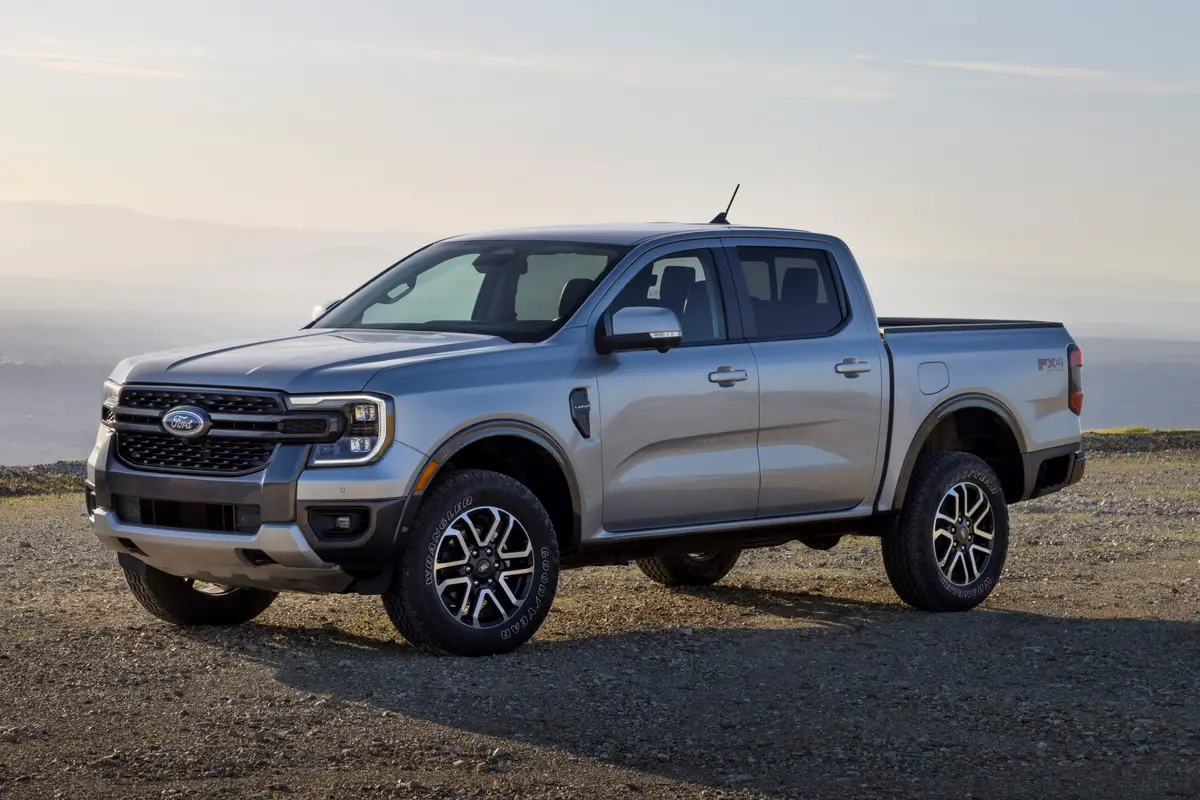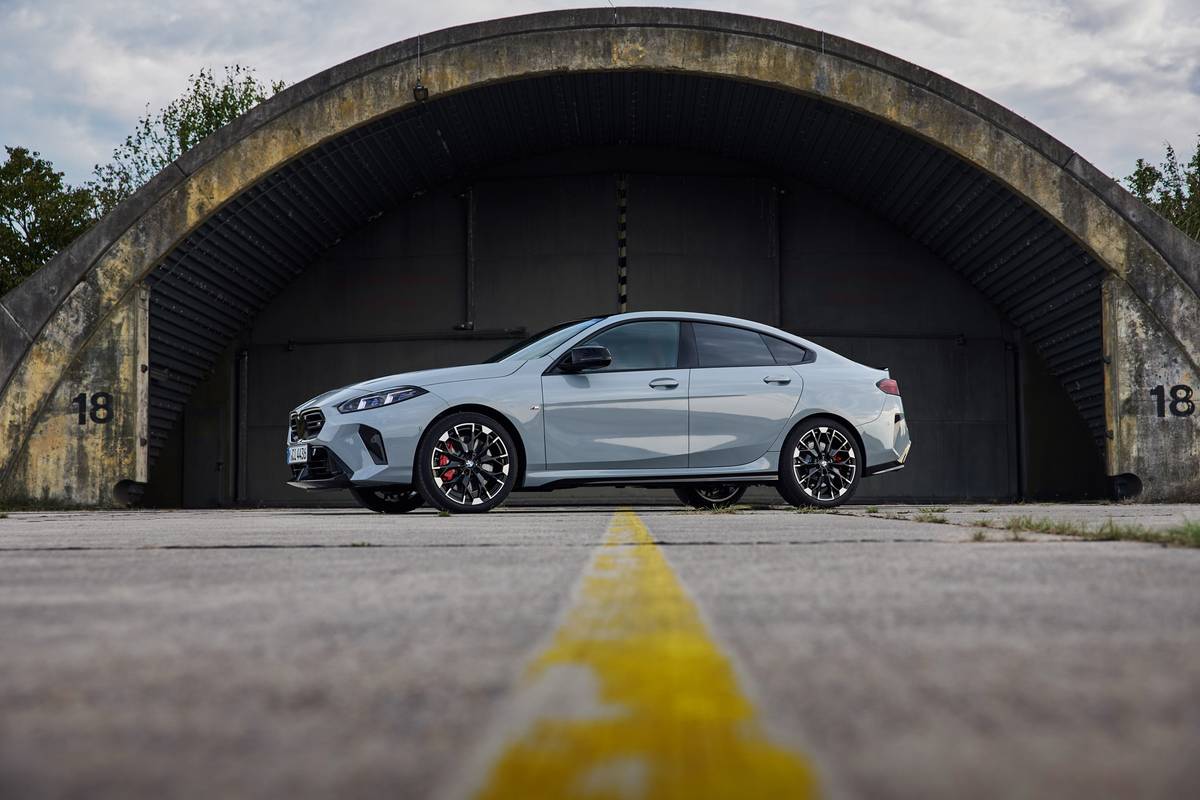PickupTrucks.com's view
You will likely hear a lot about the fact that GM’s new compact pickups no longer have a V6 or the highest payload ranking in the class, but the potential for criticism from its competitors does not worry GM even a little bit, and that says a lot about their confidence in the new Chevrolet Colorado and GMC Canyon models.
GM believes it now has the best compact pickup lineup in the market, and that people who need V6s and maxi-payload capacity would probably prefer a full-size pickup anyway.
Time will tell if they’re right about the V6 and the payload issue, but you can see right off that the world’s biggest car company is correct about having the best lineup of compact pickups in the market.
In every conceivable way except the ones mentioned above, Colorado and Canyon are better than the S-10 and Sonoma models they replace. In the most significant aspects of a pickup, they are significantly better.
Most importantly, the trucks are bigger, stiffer, quieter, better built, more responsive, and come with much better powertrains. In all, they make much better personal use vehicles than the models they replace and are at least equal as work trucks.
Style is always a matter of taste, but no one could say either Colorado or Canyon are ugly. They’re sort of good-looking in a mid-west farmer kind of way.
Sure, they cost a little more than the vehicles they replace, but GM would quietly point out that they deliver a whole lot more for the money.
On paper then, they look like a much better investment than the models they replace, and that proves to be the case on the road as well.
Something about the size, design and build quality of Colorado/Canyon suggests solidity from the outside, and that feeling is re-enforced once you sit behind the wheel. If you’ve got a really sophisticated spine and are familiar with the old trucks, you might at this point recognize the only carryover part — the seat frame.
All the rest is new and that’s a very good thing, though it’s unlikely anyone is going to want to mount a replica of the instrument panel on their rec room wall because it’s like art. Worker-like is a better description, though the fit and finish are better than that.
The HVAC knobs are below the stereo controls, which was God’s original plan when She created the pickup, but they are a little low on the centre console for our taste.
The real problem with the interior of the pickups is the fact that it really is ”the” interior. It’s a pity that GM didn’t invest a little more to differentiate the two, to meet a wider taste range in the buyer base.
Some people will also wish that GM had given the interiors more overhead storage and generally made the thing feel a little funkier. Sticking with worker-like doesn’t speak to the sense of fun and freedom that most personal use buyers want in a compact pickup. You can always after-market the boredom away, or maybe GM will fix it in the inevitable redo in a couple of years.
The company has been surprisingly responsive to other suggestions we’ve made regarding gauge visibility and ride smoothness, so maybe they’ll do something on this front, too.
By the time your eyes and hands have registered the interior quality, your elbows and head and knees will be appreciating the increased space, but especially the wider part. It’s hard to imagine anyone who won’t enjoy and make use of the greater interior volume, and it makes the Colorado/Canyon accessible to a larger audience, and we mean that in both senses of the word. Larger people will be able to fit more comfortably in the new trucks, and that definition embraces a larger segment of the market.
It takes as long to appreciate the improved stiffness of the new architecture (GM says it’s 250 percent more rigid) as it takes to encounter the first bump or depression or railroad track. Colorado and Canyon float across those types of things with barely a ripple disturbing your karma or your coffee. They’re also a lot quieter than the old models, which allows you to enjoy the ever-expanding universe of sound systems, including GM’s XM radio system, which delivers a wide-range of commercial-free music at a small cost.
This rigidity and quiet makes for a much better long-term relationship, since the trucks will beat you up and shake themselves apart less.
While GM did not supply the uber-power needs of the few by supplying a V6, it certainly gave the many a much better deal with the I-4 and I-5 engines.
The Vortec 2800 I-4 delivers more horsepower (175) and torque (185) than other competing four-cylinders, while the Vortec 3500 I-5 has horsepower (220) and torque (225) that’s better than or comparable to competitors’ base-level six-cylinder engines.
Those peak numbers do not adequately describe the skills of these engines, since they both deliver solid, smooth juice right up the power curve. The I-5 naturally delivers more grunt, but the I-4 does very well by the driver in most real world situations.
Indeed, if you’re looking for a compact pickup with good fuel economy, decent power and the ability to haul people or stuff on an irregular basis, the I-4 with the standard five-speed manual shifter could suit you very well. And GM is making more of an effort to provide front-wheel-drive choices to the snow-deprived parts of the continent, so that’s good news for the folks who want an on-road vehicle.
This does not mean that GM has pulled back from the demands of the off-road warriors or the folks who want a real work truck — that payload issue notwithstanding. There’s still a daunting variety of bed, configuration, suspension and payload to choose from.
But the feeling remains that GM has now embraced the modern reality of the compact pickup market — that they’re now mostly bought as personal use vehicles with strong functionality features, rather than as work trucks with some creature features added on.
Latest news



